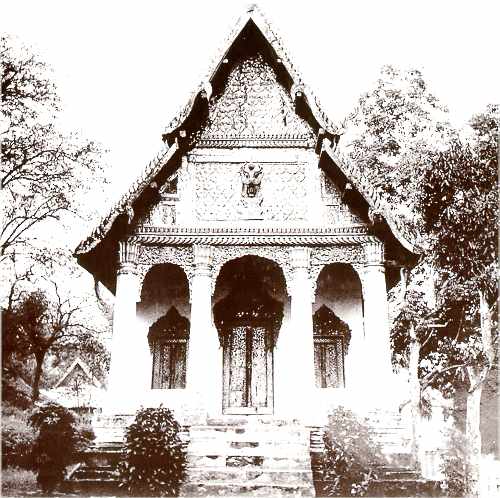|
| Main Contents | Luang Prabang and Its Art | Furniture and Statuary | Beliefs and Religions | Population and Habitat |
Vat Pa Houak, the Monastery of the Bamboo Forest (E.EE.O. 1930) |
still |
| Vat
Pa Houak, the Monastery of the Bamboo Forest (E.EE.O. 1930) Built at the foot of Phon Si hill facing the former royal palace, Vat Pa Houak is named in honor of the forest which formerly occupied the viharn92s present site. Built in the Vientiane style in 1861 during the reign of King Chantharat, the viharn was built in the simple style featuring a single hail and porch. The roof, decorated with the upper torso of a naga, features a change in gradient. Toothed ornamentation on the roof borders are executed in the style of Cambodian pagodas as well as those found in Bangkok. Inside the viharn, paintings by Laotian artists retrace the Jambupati-Sutta legend. Chinese influence is recognizable in the ornamentation of the clothes and in the rendition of King Bimbisara who appears as a Chinese dignitary |
SEAsite Laos | Overview | History | Art & Culture | Language | Literature |
Gallery | Folklore | Other Topics | Links | SEAsite |
|
2003 SEAsite
Laos. Treasures of Luang Prabang |

 i
i